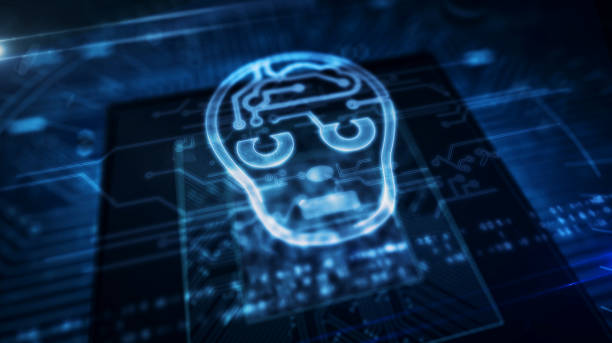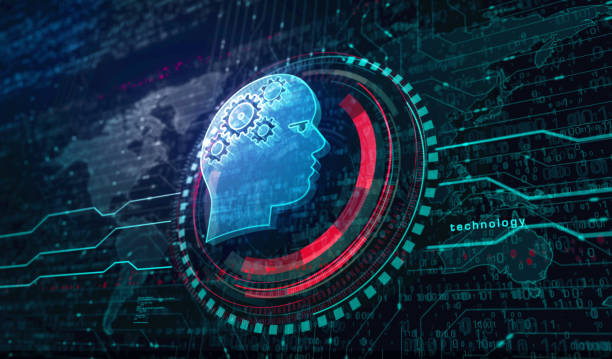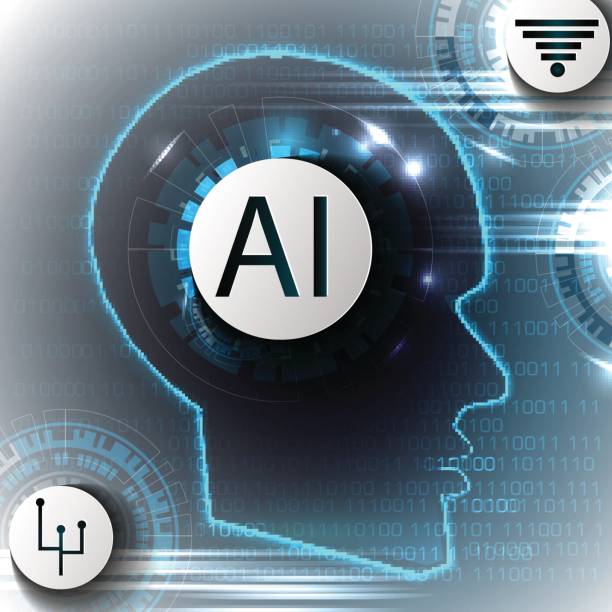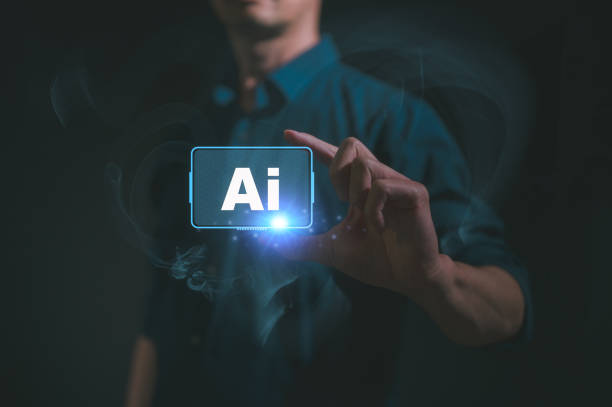Introduction to the Concept of AI Robot: What it is and its History
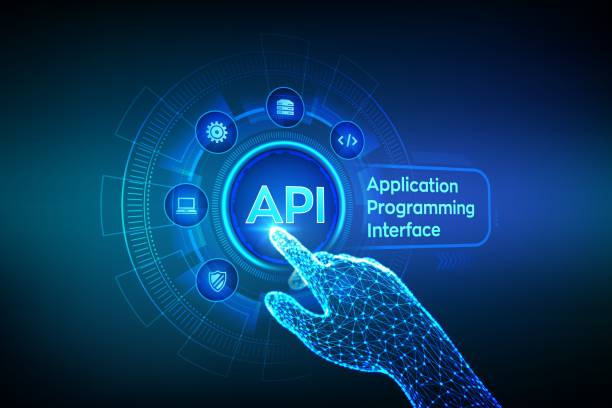
Introduction to the Concept of AI Robot: What it is and its History
#AI robot, a combination of two distinct fields of robotics and artificial intelligence, aims to create machines capable of performing complex and intelligent tasks autonomously.
In other words, #AI robots are not only able to move and perform physical activities but can also process information, learn, make decisions, and solve problems using artificial intelligence algorithms.
To better understand AI robots, it is necessary to look at the history and evolution of these two fields.
Robotics, as a science, deals with the design, construction, operation, and application of robots.
The roots of this science go back to ancient times, but its serious development began in the 20th century with the advancement of electronic and mechanical technologies.
In contrast, Artificial Intelligence (AI), as a branch of computer science, focuses on developing systems capable of mimicking human intelligence.
The idea of AI also has a long history, but significant advancements in this field have occurred in recent decades with the emergence of machine learning algorithms and deep neural networks.
The combination of these two fields, namely robotics and artificial intelligence, led to the emergence of AI robots that are capable of performing tasks that previously only humans could do.
These robots can operate in complex and unpredictable environments, interact with humans, and gradually learn from their experiences.
Early examples of AI robots include industrial robots used for repetitive and dangerous tasks on production lines.
But today, AI robots are used in a wide range of industries and applications, including healthcare, customer service, agriculture, and transportation.
As this field is rapidly developing, #AI robots are expected to play a more significant role in our daily lives.
In summary, #AI robot is an intelligent machine capable of performing complex and intelligent tasks automatically, created by combining robotics and artificial intelligence.
These robots can be used in a wide range of industries and applications and are expected to play a more significant role in our daily lives.
In fact, #AI robot has created new possibilities by combining the capabilities of robotics and artificial intelligence.
Don’t have a corporate website yet and are missing out on online opportunities? With professional corporate website design by Rasawweb,
✅ Double your business credibility
✅ Attract new customers
⚡ Free consultation for your corporate website!
Main Components of an AI Robot: Examining Sensors, Processors, and Actuators

Main Components of an AI Robot: Examining Sensors, Processors, and Actuators
An #AI robot, like any other complex system, consists of various components, each responsible for a specific task.
These components are generally divided into three main categories: sensors, processors, and actuators.
Sensors are responsible for collecting information from the surrounding environment.
This information can include images, sounds, temperature, pressure, position, and so on.
Sensors are the eyes and ears of the #AI robot and help it to be aware of its surroundings.
There are different types of sensors, each designed to collect a specific type of information.
For example, cameras are used to capture images, microphones for recording sound, temperature sensors for measuring temperature, and position sensors for determining the #robot’s location.
Processors are the brains of the #AI robot.
They process the information collected by the sensors and make the necessary decisions to perform various tasks.
Processors use AI algorithms to process information, learn, and make decisions.
Actuators are tools that allow the #AI robot to interact with its environment.
These actuators can include motors, robotic arms, wheels, and other devices that enable the #robot to move, manipulate objects, and perform other physical tasks.
Actuators are the hands and feet of the #AI robot and help it to execute the processor’s commands.
For example, an #AI robot can use cameras to detect the position of an object, with the processor, decide how to pick it up, and with the robotic arm, pick up the object and place it elsewhere.
The proper combination of these three components (sensors, processors, and actuators), using artificial intelligence algorithms, enables the #AI robot to perform complex and intelligent tasks automatically.
Selecting the right sensors, processors, and actuators, as well as designing efficient AI algorithms, are among the main challenges in designing and building #AI robots.
The selection of each of these components depends on the intended application of the #AI robot.
AI Algorithms Used in Robotics: Machine Learning and Neural Networks
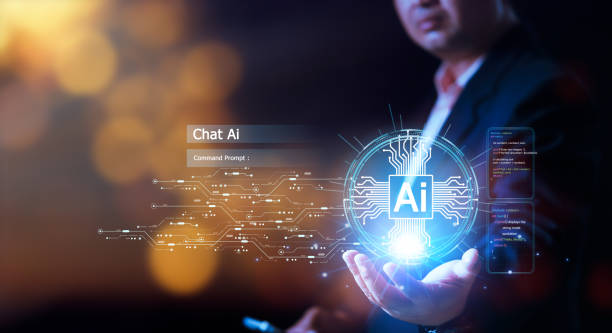
AI Algorithms Used in Robotics: Machine Learning and Neural Networks
AI algorithms are the beating heart of every #AI robot.
These algorithms enable the #robot to process information, learn, make decisions, and solve problems.
In the field of robotics, two categories of AI algorithms are widely used: machine learning and neural networks.
Machine Learning enables the #robot to learn from data without explicit programming.
In other words, the #robot can identify patterns and relationships by analyzing data and use these patterns for prediction and decision-making.
Machine learning algorithms are used in robotics for various applications, including object recognition, navigation, motion control, and task planning.
Neural Networks are a specific type of machine learning algorithm inspired by the structure of the human brain.
Neural networks consist of a large number of nodes (neurons) connected in layers.
Each node receives an input, processes it, and produces an output.
By training the neural network with data, the network can learn complex patterns and relationships.
Deep Neural Networks are a more advanced type of neural network consisting of more layers.
Deep neural networks are capable of learning very complex patterns and relationships and have been very successful in applications such as image recognition, natural language processing, and computer games.
In robotics, deep neural networks are used for applications such as object recognition, motion control, and task planning.
For example, an #AI robot can use a deep neural network to analyze images captured by a camera and recognize different objects.
This information can be used for navigation, object manipulation, and performing other tasks.
The use of machine learning algorithms and neural networks in robotics has led to the creation of #AI robots capable of performing complex and intelligent tasks autonomously.
The selection of the appropriate algorithm for a specific application depends on various factors, including the type of data, the complexity of the task, and hardware limitations.
In recent years, with the expansion of deep learning, #AI robots have experienced significant progress.
| Algorithm | Applications in Robotics | Advantages | Disadvantages |
|---|---|---|---|
| Machine Learning | Object detection, Navigation | Ability to learn from data | Requires large amounts of data |
| Neural Networks | Motion control, Task planning | Ability to learn complex patterns | Requires high processing power |
| Deep Neural Networks | Image recognition, Language processing | Ability to learn very complex patterns | Requires very large amounts of data and very high processing power |
Applications of AI Robots in Industry, Medicine, and Services
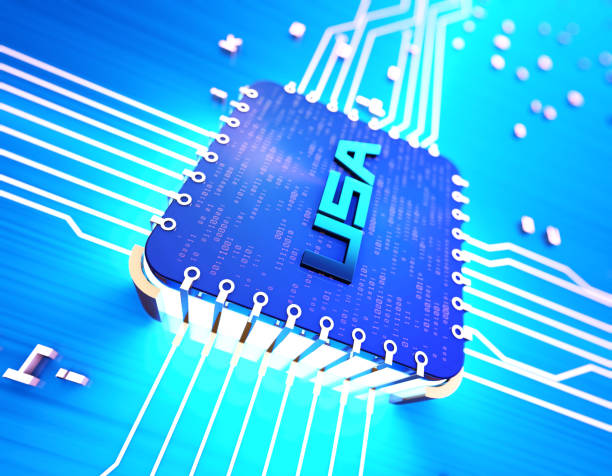
Applications of AI Robots in Industry, Medicine, and Services
#AI robots, due to their unique capabilities, are used in a wide range of industries and applications.
Among the most important of these applications are industry, medicine, and services.
In industry, #AI robots are used to perform repetitive, dangerous, and precise tasks.
These robots can be employed in production lines, warehouses, and other industrial environments to increase productivity, reduce costs, and improve safety.
For example, #AI robots can be used for welding, painting, packaging, and moving parts.
In medicine, #AI robots are used to perform precise surgeries, assist in disease diagnosis, and provide healthcare.
These robots can help surgeons perform minimally invasive surgeries with greater accuracy, help doctors diagnose diseases in their early stages, and help patients receive healthcare at home.
For example, #AI robots can be used for robotic surgeries, analyzing medical images, and providing online medical consultations.
In services, #AI robots are used to provide customer service, perform administrative tasks, and provide security services.
These robots can be employed in banks, hotels, airports, and other service environments to improve services, reduce costs, and increase customer satisfaction.
For example, #AI robots can be used to answer customer questions, process banking transactions, and provide tourist information.
Additionally, in the field of agriculture, #AI robots have also come to the aid of farmers.
With technological advancements, the applications of #AI robots in these and other industries are expected to increase.
#AI robot with its capabilities can assist humans in many fields.
Does your company’s website create a professional and lasting first impression on potential customers? Rasawweb, with professional corporate website design, not only represents your brand’s credibility but also opens a path for your business growth.
✅ Create a powerful and trustworthy brand image
✅ Attract target customers and increase sales
⚡ Get a free consultation now
Challenges in AI Robot Development: Ethical and Technical Considerations
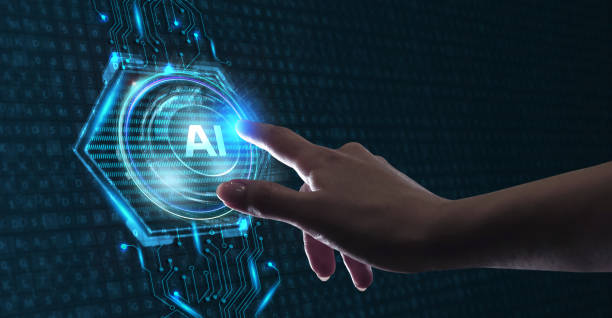
Challenges in AI Robot Development: Ethical and Technical Considerations
The development of #AI robots, despite its many advantages, faces numerous challenges.
These challenges can be divided into two main categories: technical challenges and ethical challenges.
Technical challenges include: developing efficient and reliable AI algorithms, designing accurate and robust sensors, building powerful and controllable actuators, and integrating these components into a unified system.
Additionally, #AI robots must be able to operate in complex and unpredictable environments and interact safely and effectively with humans.
Ethical challenges include: the accountability of #robots, privacy protection, prevention of discrimination, and the impact of #robots on employment.
#AI robots must be designed in such a way that in case of error or damage, responsibility can be determined.
Also, #AI robots should not collect or use individuals’ personal information and should not discriminate based on race, gender, or other personal characteristics.
Furthermore, the development of #AI robots can lead to job losses in some industries.
To address these challenges, policymakers, industrialists, and researchers must collaborate to develop appropriate ethical and technical standards for the development and use of #AI robots.
Additionally, it is necessary to provide proper training for individuals so that they can cooperate with #AI robots and benefit from their advantages.
Paying attention to ethical and technical considerations is essential for the development of #AI robots.
The Future of AI Robots: Predictions and Emerging Trends
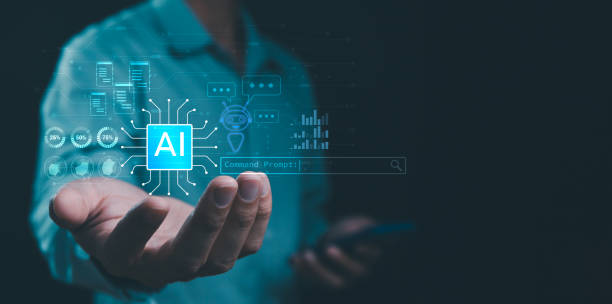
The Future of AI Robots: Predictions and Emerging Trends
The future of #AI robots looks very bright and exciting.
With technological advancements, #AI robots are expected to play a more significant role in our daily lives and be used in a wider range of industries and applications.
Emerging trends in the field of #AI robots include: the development of autonomous #robots, the development of collaborative #robots, and the development of social #robots.
Autonomous #robots are capable of performing complex tasks completely automatically and do not require human supervision.
These #robots can be employed in dangerous and inaccessible environments and significantly increase productivity.
Collaborative #robots are designed to cooperate safely and effectively with humans.
These #robots can be employed alongside humans in production lines, warehouses, and other work environments to assist them in performing tasks.
Social #robots are designed to have social interactions with humans.
These #robots can be used in homes, hospitals, and other social environments to help individuals with daily tasks, provide healthcare, and establish social connections.
It is predicted that in the future, #AI robots will become increasingly smarter, more flexible, and more autonomous.
They will be able to perform more complex tasks, operate in more diverse environments, and interact with humans more naturally and effectively.
However, the development of #AI robots requires attention to technical and ethical challenges.
It is necessary for policymakers, industrialists, and researchers to collaborate to develop appropriate standards for the development and use of #AI robots to benefit from this technology and prevent its potential risks.
In general, the future of #AI robots depends on innovation in various fields.
The Impact of AI Robots on Jobs and the Labor Market
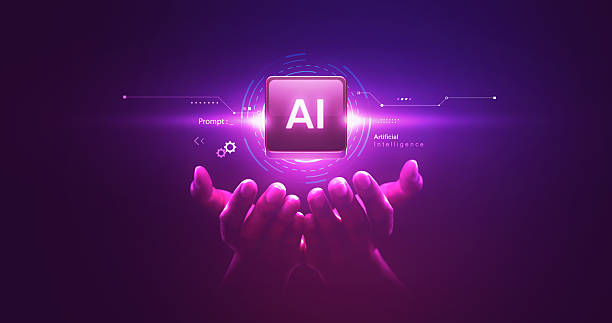
The Impact of AI Robots on Jobs and the Labor Market
One of the debated topics surrounding #AI robots is their impact on jobs and the labor market.
Some experts believe that #AI robots can lead to job losses in some industries, as they are capable of performing tasks previously done by humans.
However, other experts believe that #AI robots can lead to the creation of new jobs, as they require design, construction, operation, and maintenance.
Furthermore, #AI robots can increase productivity and lead to economic growth, which in turn can create new jobs in other industries.
Studies have shown that the impact of #AI robots on jobs and the labor market is complex and multifaceted, depending on various factors, including the type of industry, type of job, and required skill levels.
Generally, jobs that are repetitive, routine, and low-skilled are more at risk of being lost.
In contrast, jobs that are creative, require problem-solving skills, and human interaction are less at risk of being lost.
For example, jobs such as production line operators, warehouse workers, and drivers are more at risk of being lost.
In contrast, jobs such as software engineers, data scientists, and marketing specialists are less at risk of being lost.
To prepare for the changes brought about by #AI robots, individuals need to upgrade their skills and learn new ones.
Also, governments and organizations need to develop policies that support workers and help them find new jobs.
Additionally, the education system needs to be designed to prepare individuals for future jobs.
Overall, the impact of #AI robots on the labor market requires careful consideration and appropriate policymaking.
How to Choose and Buy a Suitable AI Robot
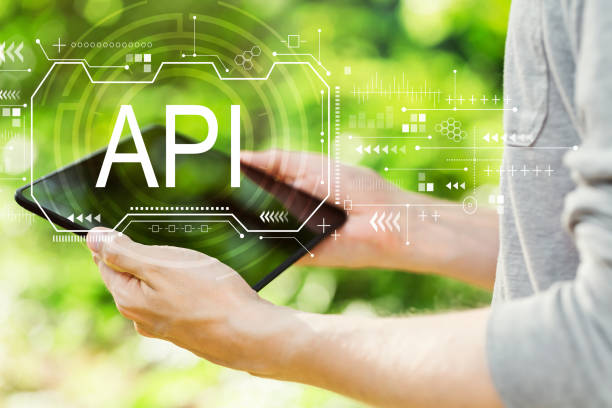
How to Choose and Buy a Suitable AI Robot
Choosing and buying a suitable #AI robot is an important decision that requires careful consideration and understanding of needs and goals.
Before purchasing an #AI robot, you need to answer the following questions: What is your purpose for buying an #AI robot? What tasks do you want to assign to the #robot? What is your budget? What features are important to you? After answering these questions, you can explore the different types of #AI robots available in the market and choose the #robot that best matches your needs and goals.
When choosing and buying an #AI robot, pay attention to the following: robot performance, robot capabilities, robot price, robot technical support, and the reputation of the manufacturing company.
The robot’s performance should match your needs.
The #robot should be able to perform the tasks you want to assign to it.
The robot’s capabilities should be practical for you.
The #robot should have features that help you perform your tasks.
The robot’s price should match your budget.
The #robot should be worth the money you pay.
The robot’s technical support should be available.
In case of a problem, you should be able to easily contact the manufacturer and get their help.
The manufacturer’s reputation should be trustworthy.
Before buying the #robot, research and make sure that the manufacturer has a good track record in producing #AI robots.
Additionally, before buying the #robot, be sure to test it.
Many companies offer the possibility to test the #robot before purchase.
Take advantage of this opportunity and test the #robot in a real environment to ensure that its performance meets your expectations.
By considering these points, you can choose and purchase a suitable #AI robot.
For buying an #AI robot, research and needs assessment are very important.
| Factor | Description | Key Points |
|---|---|---|
| Purpose | Defining the purpose of buying the #robot | Specifying expected tasks |
| Capabilities | Reviewing #robot capabilities | Ensuring practical features exist |
| Price | Comparing prices | Determining budget and finding appropriate value |
| Support | Checking technical support | Ensuring access to after-sales services |
| Reputation | Checking company reputation | Researching the manufacturer’s history |
Are your e-commerce site visitors leaving before making a purchase? Don’t worry anymore! With Rasawweb’s professional e-commerce website design services, solve the problem of converting visitors into customers forever!
✅ Significantly increase conversion rate and sales
✅ Unparalleled and attractive user experience
⚡ Contact us now for a free consultation!
Maintenance and Repair of AI Robots: A Practical Guide
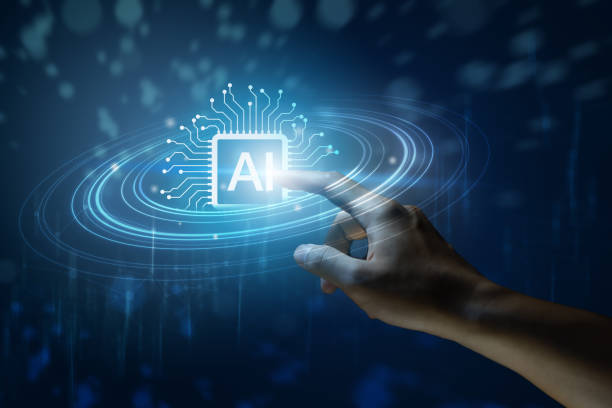
Maintenance and Repair of AI Robots: A Practical Guide
Maintenance and repair of an #AI robot are essential for preserving its performance and lifespan.
An #AI robot, like any other complex device, requires regular maintenance to prevent problems.
In this section, we provide a practical guide for the maintenance and repair of #AI robots.
The first step in maintaining an #AI robot is regular cleaning.
Clean the #robot regularly with a soft, dry cloth to prevent dust and dirt from accumulating.
Avoid using strong detergents, as these can damage the #robot’s components.
The second step is regularly checking the #robot’s components.
Inspect the #robot’s components regularly to ensure they are intact.
If any damage or wear is observed, replace the affected component.
The third step is regularly lubricating the #robot’s moving parts.
Lubricate the #robot’s moving parts regularly with appropriate oil to prevent wear and corrosion.
The fourth step is updating the #robot’s software.
Regularly update the #robot’s software to ensure its proper functioning and benefit from the latest features and security improvements.
If a problem occurs with the #robot, try to identify the problem.
For this, you can use the #robot’s manual or contact the manufacturer’s technical support.
After identifying the problem, try to fix it.
For this, you can use appropriate tools and follow the manufacturer’s instructions.
If you are unable to fix the problem, entrust the #robot to a repair specialist.
In summary, for the maintenance of an #AI robot, performing periodic checks and keeping it clean are essential.
Advanced Concepts in AI Robotics: Reinforcement Learning and Natural Language Processing
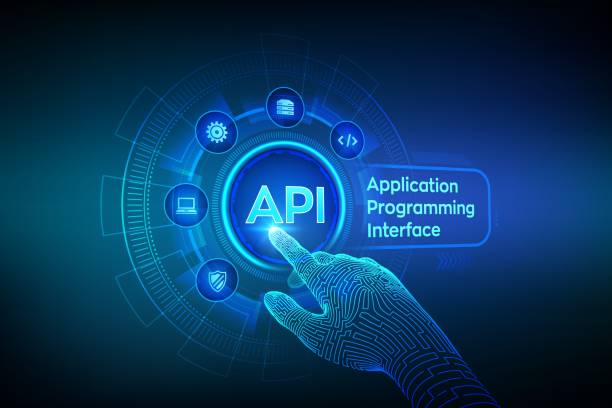
Advanced Concepts in AI Robotics: Reinforcement Learning and Natural Language Processing
In the advanced world of #AI robots, two key concepts play a very important role: reinforcement learning and natural language processing.
Reinforcement Learning is a machine learning method that allows the #robot to learn how to perform a specific task in the best way through interaction with its environment.
In this method, the #robot receives feedback (reward or penalty) by performing various actions in the environment and improves its strategy based on this feedback.
In other words, the #robot learns how to achieve its goal through trial and error.
Reinforcement learning is used in robotics for various applications, including motion control, navigation, and task planning.
For example, a #robot can use reinforcement learning to learn how to travel a path quickly and with minimal energy consumption.
Natural Language Processing (NLP) is a branch of artificial intelligence that enables the #robot to understand human language and interact with it.
Using natural language processing, the #robot can recognize voice commands, answer questions, and communicate with humans more naturally and effectively.
Natural language processing is used in robotics for various applications, including voice control of #robots, providing customer service, and training #robots.
For example, a #robot can use natural language processing to respond to voice commands and perform various tasks.
The combination of reinforcement learning and natural language processing has led to the creation of #AI robots capable of performing complex and intelligent tasks autonomously and interacting with humans naturally and effectively.
These two concepts will play an important role in the development of future #AI robots.
In fact, these two are considered among the most important capabilities of #AI robots.
Frequently Asked Questions
| No. | Question | Answer |
|---|---|---|
| 1 | What is an AI robot? | An AI robot is a machine capable of understanding, reasoning, learning, and problem-solving, and can perform complex tasks with relative autonomy. |
| 2 | What are the most important applications of AI robots? | Key applications include industrial manufacturing, customer services (chatbots), medicine and surgery, autonomous transportation, space exploration, and military affairs. |
| 3 | What is the main difference between an AI robot and a regular robot? | A regular robot only follows programmed instructions, while an AI robot can learn from data, make decisions, and adapt itself to new environments. |
| 4 | How do AI robots learn? | They learn by identifying patterns and improving their performance through machine learning algorithms (such as deep learning, reinforcement learning) and processing vast amounts of data. |
| 5 | Can AI robots have emotions? | Currently, AI robots do not possess real emotions in the human sense. They can mimic or detect emotions, but they do not understand or experience them. |
| 6 | What are the current limitations of AI robots? | Limitations include the need for large amounts of data, inability to understand abstract concepts, lack of true creativity, ethical issues, and challenges of generalizability in new environments. |
| 7 | What is the role of AI in the development of humanoid robots? | AI helps humanoid robots to walk, maintain balance, perceive their surroundings, interact with humans, and perform complex tasks. |
| 8 | How is the future of AI robots predicted? | It is predicted that AI robots will become smarter, more autonomous, and capable of performing more complex tasks in daily life and industry, and their interaction with humans will increase. |
| 9 | Can AI robots replace all human jobs? | It is unlikely that all human jobs will be replaced. Robots will take over many repetitive and dangerous tasks, but jobs requiring creativity, empathy, and ethical judgment will remain. |
| 10 | What ethical and social challenges arise with the expansion of AI robots? | Challenges include issues related to privacy, data security, ethical decision-making by robots, impact on employment, and accountability in case of errors. |
And other advertising services from Rasawweb Advertising Agency:
- Smart Social Media: A creative platform to improve SEO ranking by optimizing key pages.
- Smart Google Ads: A combination of creativity and technology to improve SEO ranking through custom programming.
- Smart Advertorials: An effective tool to increase sales with intelligent data analysis.
- Smart Direct Marketing: A combination of creativity and technology for user engagement through SEO-driven content strategy.
- Smart Sales Automation: Transform campaign management with the help of Google Ads management.
And hundreds of other services in the field of internet advertising, advertising consultation, and organizational solutions
Internet Advertising | Advertising Strategy | Advertorials
Sources
AI Robot ApplicationsIntroduction to Types of Smart RobotsThe Future of AI and RoboticsWhat is Artificial Intelligence? A Complete Guide
? With Rasawweb Afarin, your business soars with power in the digital world. From responsive website design to search engine optimization, we are by your side to ensure a powerful and lasting presence on the web.
📍 Tehran, Mirdamad Street, next to Bank Markazi, Kazerun Jonubi Alley, Ramin Alley, No. 6

